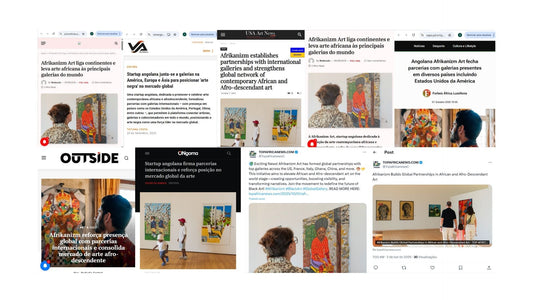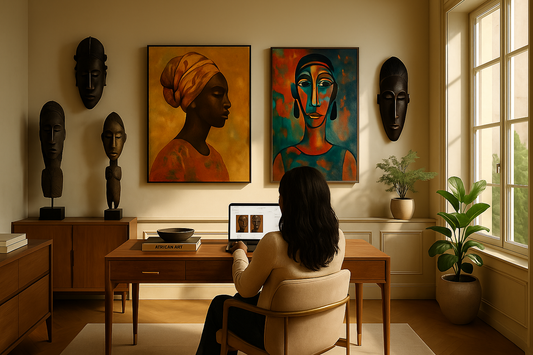AFRIKANIZM ART NEWS

Redefining Legacy: Jorge M. & Darlene Pérez Donate 36 Works by African and Diaspora Artists to Tate
Amadeo Carvalho: Bridging Cultures Through Paint
Redefining Legacy: Jorge M. & Darlene Pérez Donate 36 Works by African and Diaspora Artists to Tate
In a landmark act of cultural philanthropy, collectors Jorge M. Pérez and Darlene Pérez have gifted the United Kingdom’s Tate museum an impressive collection of 36 works by artists from Africa and its diaspora.
The donated works span multiple generations and media, reflecting the diversity and dynamism of contemporary African artistic practice. It marks a second major contribution by the Pérez couple to the institution’s holdings of African and diasporic art — reinforcing their long‑standing commitment to expanding access and visibility for under‑represented artists.
The Tate, which has recently emphasised efforts to broaden its curatorial voice and collection composition, welcomed the donation as “transformative” in its mission to rebalance representation within the global art canon.For the African art scene and its global stakeholders, this gift holds significance beyond the works themselves. It signals institutional confidence in African and diaspora artists — not only as cultural contributors but as central actors in contemporary art history and markets.
This development aligns with a broader trend in which major institutions, collectors, and platforms are reshaping the infrastructure around African art — increasing its market value, scholarly attention, and public recognition. The Pérez donation stands as a concrete example of how representation + access + scale can create meaningful change.
The Pérez gift to Tate is more than generosity: it is a strategic repositioning of African‑diasporic art within global cultural systems, affirming the power of art to bridge continents, histories and futures.
Take a look at six works from the Pérezes’ gift.
Seydou Keïta, Untitled, 1957–58

Currently featured in a major exhibition at the Brooklyn Museum, Malian photographer Seydou Keïta was celebrated for his studio portraits that empowered his sitters to present themselves as they wished. In this particular image, a woman lies in a relaxed position reminiscent of the classic odalisque motif — a form deeply rooted in European art history. Yet, consciously or not, she reclaims and reinterprets this visual trope, challenging the traditional portrayal of women as passive figures.
Rotimi Fani-Kayode, Twins, 1989
The evocative imagery of Nigerian-born, London-based artist Rotimi Fani-Kayode frequently centres Black male subjects, exploring complex emotional and psychological terrain. This particular photograph was created in 1989, the same year the artist tragically passed away due to AIDS-related complications — lending his work an added poignancy and urgency.
J.D. ‘Okhai Ojeikere, Mmon Mmon Edet Ubok, 1974

A pioneer in African photography, J.D. ’Okhai Ojeikere gained acclaim for his iconic documentation of Nigerian women’s hairstyles in the post-independence era. In this portrait, as in much of his work, the subject is framed against a stark white background — a decision that strips away temporal context and elevates the hairstyle into a symbol of timeless beauty and heritage.
Gavin Jantjes, Quietly at Tea, 1981

In 1970, South African artist Gavin Jantjes relocated to London, a moment that would influence the creation of this politically charged painting. The work presents a symbolic critique of the era: a clergyman, businessman, and soldier are depicted in solemn discussion, while an African sculpture lies overturned in the foreground — a potent metaphor for the marginalisation of African identity within British society.
Amadou Sanogo, Démarche du Singe, 2015

Malian artist Amadou Sanogo is known for painting on locally sourced cloth, often found in the bustling markets of Bamako. His minimal, stylised figures are intended to reflect the intricate web of human relationships — with oneself, others, and the environment. As he once shared in an interview with Elephant, their deliberate distortion stems from a belief in human imperfection: “I can’t create perfect forms because they don’t exist.”







No comments